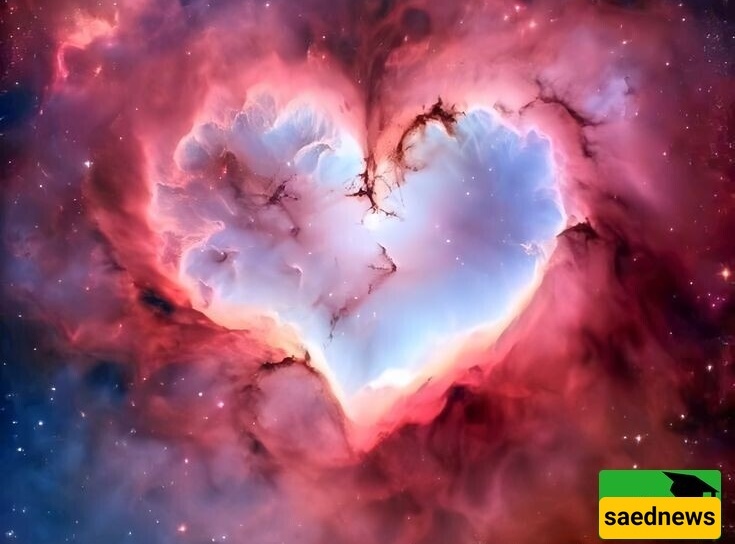SAEDNEWS: At the center of this nebula lies the open star cluster Melotte 15, composed of extremely young, massive, and hot stars. Their energetic radiation and powerful stellar winds ionize the surrounding gas and dust, gradually eroding the dust pillars within the nebula.

According to the Science Service of Saed News, a large and breathtaking nebula seen in the upper left of NASA’s Astronomy Picture of the Day is known as the Heart Nebula. Officially cataloged as IC 1805, this nebula strikingly resembles a human heart. IC 1805 is an emission nebula that glows in vivid red due to the radiation of hydrogen. In this image, the light emitted from sulfur (yellow) and oxygen (blue) is combined with hydrogen emission to create an even more detailed and colorful view.
At the center of the nebula lies the open star cluster Melotte 15, composed of very young, massive, and hot stars. These stars ionize the surrounding gas and dust with their high-energy radiation and powerful stellar winds, gradually eroding the dust pillars within the nebula.
Located approximately 7,500 light-years from Earth in the Cassiopeia constellation, the Heart Nebula is part of the larger Cassiopeia Star-Forming Region, which includes massive gas clouds and active stellar nurseries.

This image, captured over 57 nights using long-exposure photography, reveals far more detail of this cosmic region. Just below the Heart Nebula, the Fishhead Nebula can be seen, another active star-forming region. In the lower-left corner of the image lies the remnant of a supernova, a testament to a past stellar explosion. On the right side, three planetary nebulae are visible, marking the final stages in the life cycles of sun-like stars.
NASA’s deep exposure also captures the faint, intricate filaments of gas and dust surrounding the nebula. These structures may be remnants of gravitational interactions, stellar winds, or shock waves shaped over millions of years.

